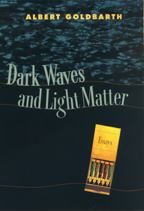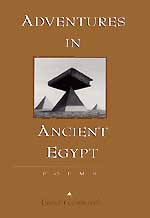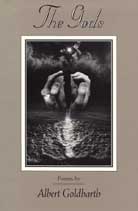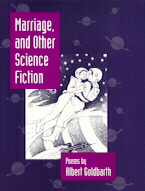| A Yeasty Mix |
AG's second take on the expansion |
| Albert Goldbarth |
 |
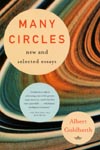 |
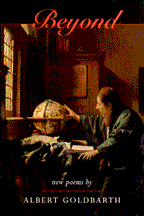 |
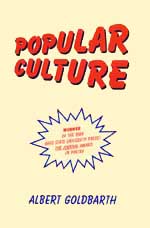 |
 |
 |
 |
In one of those strokes of serendipitous luck that thrive on lively browsing, I was reading in some astronomy journal of seven or eight years back about the guesses on whether our universe is boundaried (yes, and eventually it collapses; no, and it keeps expanding forever); and that same day I wound up discovering this in a supermarket tabloid: "Outrage! College S&M Club Funded By Taxpayers!" There's a photo above that article of two students sitting cross-legged over a spread of fetishy straps and a mini-ankle-fettered Barbie, the way that, somewhere else, two students might be applying themselves to the greenishly fuming vials of their chemistry lab.
It's a state university: public money. State Assemblyman John McEneny is quoted as saying "There will be substantial [and then this wonderful phrasing] backlash from this, I guarantee it."
So do I. I understand some people will see this funky club as inappropriate to the image of, and extraneous to the mission of, an institution of higher learning. Still, "university spokeswoman Lisa James Goldsberry" makes apt sense: "As long as they abide by the student guidelines, they're just another club as far as we're concerned." Our "founding fathers" boarding the Mayflower probably didn't seem any more unusual to their British Christian contemporaries than these few bondage apprentices seem to Assemblyman McEneny's supposedly wrathful constituency.
Boundaries: where, and why, do they get drawn? By whom, and who falls on which side of them? Collapse? Or expand?
This S&M club is one more interesting litmus test for "diversity." Will members and supporters of the Students of Color Alliance, and the Campuswide Gay Pride Club, and the Single Working Parents Association extend their organizational good will to their new, whip-wielding peers? And when, and to what extent, does consideration of "quality" supersede a university's commitment to "diversity," since of course the two are not the same and may, in a given arena, be at odds?
From here, a thousand other sticky questions pop their wormheads out of the opened can. If it breaks no city, state, or county laws, should a university campus accommodate meetings of a nudist club? And which is most diverse for the needs appropriate to a creative writing program: a poetry faculty of one black formalist poet and one white formalist poet? or, for example, one white formalist poet and one free verse poet? Or what does it mean for your local bookstore to celebrate "Banned Books Week," but not tolerate Outlaw Biker on its periodicals shelves.
These kinds of very American questions, all of them coated with thorns and difficult adhesive, circle intriguingly about three books that are currently in my reading pile:
Touched with Fire, by Kay Redfield Jamison, a study of the interface between the arts and mental illness, is grounded in psychological and neurochemical expertise, yet manages powerful empathy toward our need for, and the integrity of, the many works of literary and visual art it considers. ("Crazy" or not -- who determines it? "Art" or raving -- what's a culture's validating process?)
Girls Lean Back Everywhere, by Edward de Grazia -- the title is from publisher and feminist Jane Heap -- is a brilliant history of landmark twentieth century "free speech" legal cases (Joyce's Ulysses, Fanny Hill, Ginsberg's Howl, D.H. Lawrence, etc.), by an attorney who was instrumental in helping to defend an impressive number of the creations he looks at. (Large, importantly-history-making swatches of judicial decisions are quoted, and these alternate with lively anecdotal accounts of the writers and their communities.)
Daniel Deronda, by George Eliot is the major Victorian writer's last completed novel -- a study, in part, of the place of Jews in England (especially the England of the gentry) in the mid-nineteenth century. (Obviously, the novel chronicles many moments of mutual misunderstanding, and of outright friction. It also, however, supplies a phrase that seems to me to represent the healthiest of blendings, and I use it as the title of this little essay: a yeasty mix.)
I'm not suggesting these books provide clear answers to the mess of questions I was listing earlier; but they certainly help me glory in confusedly attending to them. And somehow, out of these books and their implications, this fantasy rises forth:
A great old-fashioned masted ship is finally landed, after months of voyaging. Its pilgrims row to shore: some actually kiss the shore in a sign of thanksgiving. A new home! They feel blessed. And then they unpack their sacred objects: Ken in a tiny leather hood, Barbie in teensy handcuffs.
They have finally arrived in a place so large and commodious, it's one thing that holds every thing, equally. That's the "one" we find in "uni"-verse. Theoretically, in "uni"-versity too.
I like to think it might also be a sweet and viable definition of an independent bookstore.
Albert Goldbarth is Distinguished Professor of Humanities in the Department of English at Wichita State University. He is the author of over twenty collections of poetry, including Across the Layers: Poems Old and New, The Gods, Adventures in Ancient Egypt, and Troubled Lovers in History.
He received the National Book Critics Circle Award for Heaven and Earth: A Cosmology, the Chad Walsh Memorial Award, and the Ohio State University Press/The Journal Award in Poetry. Jan. 31 was nominated for the National Book Award. He has also published three volumes of essays: A Sympathy of Souls, Great Topics of the World, and Dark Waves and Light Matter. This month he has two new books coming out, Many Circles: New and Selected Essays and Saving Lives: Poems.

